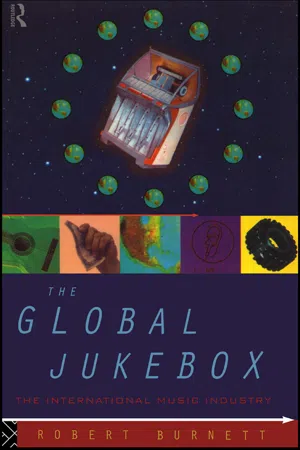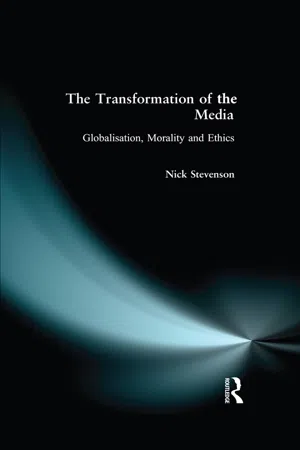Social Sciences
Mass Culture
Mass culture refers to the widespread dissemination of cultural products and practices to a large audience, often through mass media and popular entertainment. It is characterized by standardized and commercialized forms of expression that appeal to a broad and diverse audience. Mass culture has been associated with the homogenization and commodification of cultural experiences.
Written by Perlego with AI-assistance
Related key terms
5 Key excerpts on "Mass Culture"
- eBook - ePub
- Denis McQuail, Mark Deuze(Authors)
- 2020(Publication Date)
- SAGE Publications Ltd(Publisher)
cultural studies (as well as in society) have led to a positive valuation of popular culture. For some media scholars (Fiske, 1987; Costera Meijer, 2001), the very fact of popularity is a token of value in political as well as cultural terms, and can be deployed as a marker of quality as much as any other form of expression.Definitions and contrasts
Attempts to define Mass Culture often contrasted it (unfavourably) with more traditional forms of (symbolic) culture. Wilensky, for instance, compared it with the notion of ‘high culture’, which would refer to two characteristics of the product:(1) it is created by, or under the supervision of, a cultural elite operating within some aesthetic, literary, or scientific tradition … (2) critical standards independent of the consumer of their product are systematically applied to it. . . . ‘Mass Culture’ will refer to cultural products manufactured solely for the mass market. Associated characteristics, not intrinsic to the definition, are standardization of product and mass behaviour in its use. (Wilenski, 1964: 176, original emphasis)Mass Culture was also differentiated from an earlier cultural form – that of folk culture, indigenous culture or a traditional culture which more evidently comes from the people and usually predates (or is independent of) mass media and the mass production of culture (see Beltrão, 1971). Original folk culture (especially expressed in dress, customs, song, stories, dance, etc.) was being widely rediscovered in Europe during the nineteenth century and throughout Latin America in the first half of the twentieth century. Often, this was for reasons connected with the rise of nationalism, otherwise as part of the ‘arts and crafts’ movement and the romantic reaction against industrialism. The rediscovery (by the middle classes) was taking place at the very time that it was rapidly disappearing among worker and peasant classes because of social change. After the end of the colonial era (throughout Africa and parts of Asia), the removal of dictatorships and military regimes (across Latin America) and the rise of emancipatory social movements such as among the Aboriginals in Australia and Native Americans in the United States, more attention was paid, investments made and scholarly work done on indigenous and minority media, in recognition of ‘the longstanding contribution that media makes to fulfilling of social justice goals’ (Podkalicka and Rennie, 2018: 3). - eBook - ePub
Image and Influence
Studies in the Sociology of Film
- Andrew Tudor(Author)
- 2013(Publication Date)
- Routledge(Publisher)
aspect of modern media was converted into a total account. Popular culture could be labelled Mass Culture and we could safely think no more about it. ‘High’ culture and the accepted products of the intellect have been honoured with minute analysis — the sociology of knowledge has often been a sociology of intellectual fashion — while the popular arts have been accorded only the most cursory of looks. All this, in part at least, because their relative ‘massness’ was made a definition of their essence. It is no underestimate to suggest that this emphasis put the sociology of the media back a step and kept it there. It is revealing to trace a rough outline of the process.Mass Culture TO MCLUHAN
There is a sense in which the Mass Culture idea is a weak excuse for a macro-sociology of the media. In focusing on microscopic processes, media studies completely failed to explore the multiple relations between the media and society. The culture of modern societies is enormous and complex. Labelling it ‘Mass Culture’ rendered it simple, and the process became self-confirming. The label ensured that those elements which did not fit were conveniently ignored. This is not to suggest that media researchers invented the Mass Culture thesis as a substitute for their lack of sociological perspective, though they may have adopted it for that reason. They did not invent it at all. It came from other roots, in particular from those who were critical of the ‘new’ society, its institutions and culture, and although these critics shared a certain mistrust of popular culture they made very odd bedfellows. Amongst them one would have to number T. S. Eliot, C. Wright Mills, F. R. Leavis, David Reisman, Edward Shils, Dwight MacDonald, and a host of others. There is some catholicity of social doctrine here!Given this obvious disparity, they retain some surprisingly common characteristics. For instance, many of the critics share a tone of condescension in their attitudes to popular culture. This is to be expected in one with views as openly elitist as Eliot's. For him true culture could only be preserved by and through an intellectual minority. But it also turns up in those who are less absolutely panic-stricken at the onset of the ‘mass’. Thus, Edward Shils feels able to talk of’refined’, ‘mediocre’, and ‘brutal’ culture as if there were a scale of fixed and settled standards. He too finally arrives at the need to oblige intellectuals ‘… to look after intellectual things’. ‘Refined’ culture is to be defended against these undesirable inroads.6 - eBook - ePub
The Global Jukebox
The International Music Industry
- Robert Burnett(Author)
- 2002(Publication Date)
- Routledge(Publisher)
Mass Culture is a term which has historically referred to the culture of the uneducated masses of industrial society. The term has been employed in academic research most often in two contexts: first, to describe the culture associated with the alienated masses of the post-war period (Riesman, 1951); and secondly to describe culture that is transmitted by the mass media (see Lewis, 1978). The first context is generally negative in its connotations, while the second context is limited by the fact that ‘Mass Culture’ has to be carried by the mass media.Over the years two main lines have been taken in the Mass Culture ‘debate’. The first is a ‘critical’ stance, while the second is a more ‘positive’ or ‘pluralist’ position. There are generally two types of critique directed at Mass Culture. The first is what we can call the ‘conservative’ critique, while the second is commonly referred to as the ‘leftist’ critique often represented by the Frankfurt School.Both traditions view Mass Culture as transmitting distorted or false consciousness through the use of repetitive stereotypes and mechanical formulae. The effects of Mass Culture are a passive ‘alienation’ and ‘anomie’ amongst the mass audience, and to exclude the majority of people from active participation by manipulating an artificial consensus or ‘lowest common denominator’ of beliefs. Implicit in both the conservative and the Frankfurt School critiques is the judgement that the joint processes of industrialization and mass democracy, of which Mass Culture is a product, reinforce a rationalization and dehumanization of all forms of social and personal being into systems that destroy the autonomy of the majority while allowing a degree of individuality to privileged groups in society.The most controversial account of Mass Culture and the music industry is that of Theodor Adorno. As Bradley (1981:214) points out, ‘with the contribution of Adorno to the social scientific study of music we enter the realm of the “great debate” about the quality and direction of contemporary culture as a whole’. Adorno’s early writings stress the commodity character of popular music and its reifying effects, a topic which is also prominent in his later study of the culture industry with Horkheimer, the Dialectic of Enlightenment - eBook - ePub
The Hollywood TV Producer
His Work and His Audience
- Muriel G. Cantor(Author)
- 2017(Publication Date)
- Routledge(Publisher)
2Social Criticism and Sociological TheoryThe popular arts (motion pictures, jazz, magazine stories, radio and television plays, and variety shows), presented to their audience through the mass media of communication,1 have been criticized so extensively and so frequently that it is unnecessary to repeat the entire discussion here. According to Herbert Gans, one reason its critics consider popular culture undesirable is that, unlike “high culture,” it is mass produced by profit-minded entrepreneurs solely for the gratification of the paying audience. He further breaks this down into three specific charges:- Mass Culture is an industry organized for profits.
- In order for this industry to be profitable, it must create a homogeneous audience and a standardized product that appeals to this mass audience.
- This requires a process in which the industry transforms the creator (communicator) into a worker on a mass assembly line; he must give up the expression of his own skills and values.2
Scholars in many fields, including sociologists and social psychologists, have made similar criticisms. For instance, C. Wright Mills has said, “between the intellectual and his potential public stand technical, economic and social structures which are owned and operated by others . . . if the intellectual becomes the hired man of an information industry, his general aims must of course be set by the decisions of others rather than his own integrity.”3While the critics disagree about whether the standardized product is imposed from above by those in control of the medium or is the expression of the masses’ will,4 they agree that the creator or communicator has become a tool of the economic system. They maintain that the system generates a low-level standardized product; the men who are working as creators in the media industries are manipulated by the system. Many books and articles about the television industry, in particular, express similar criticisms of both the medium content and the people responsible for this content. This criticism’s main theme is “that while television is supposed to be ‘free,’ it has in fact become the creature, the servant, and indeed the prostitute of merchandising.”5 The commercial system, because it must appeal to mass tastes, limits the freedom of the technicians and artists producing for television to innovate and express themselves; in addition, the commercial system attracts persons of questionable skills and integrity, who use the medium for personal gain at the expense of the public.6 - eBook - ePub
The Transformation of the Media
Globalisation, Morality and Ethics
- Nicholas Stevenson(Author)
- 2014(Publication Date)
- Routledge(Publisher)
In Schiller’s (1996) most recent defence of this argument he focuses upon the capitalist driven nature and commodification of American popular culture before transferring this model to the rest of the world. The globe, it seems, is being remade in America’s own image. American capitalist culture, according to Schiller, is being developed by the expansion of credit, rampant consumerism, advertising and the systematic displacement of traditional forms of constraint. Capitalism American style has largely arisen in a national context that lacks any recognisable tradition of social democracy and where working-class labour organisations have only the weakest public presence. Such an environment has fostered the integration of information and culture into the dominant structures of the finance economy. Popular culture in America is driven by capitalist accumulation strategies. Economic forces are the main structures behind technological developments such as the super information highway and the internet, and they also help determine the superficiality of much of mainstream Mass Culture. The dominance of the economic system over other social spheres helps foster a culture of conformity rather than critique, of sensation rather than substance and technique rather than reflection. Cultural concerns, other than for a small intellectual elite, are run, managed and determined by the parameters of economics. For this reason, American culture carries ideological messages of consumerism and promotes acquisitive behaviour in the host and the world population in general. Mass forms of entertainment, therefore, act as a form of compensation for a disintegrating communal life while encouraging the displacement of critical questions connected to a divided society. Schiller argues that the expansion in entertainment services not only provides new markets for advertisers, but masks important social issues such as the growing underclass, widening social divisions and a spiralling prison population. Mass Culture thereby insulates the well-off from the poor, and is utilised increasingly by private as opposed to public interests.Schiller maintains that while America has declined in its overall position within the world economy, it has maintained its hegemony over the globe’s culture. Since the 1980s, culture everywhere has become increasingly Americanised and penetrated by economic reason. The increasing integration of media products into the global market, and the rapid deregulation of public cultures has promoted worldwide processes of Americanisation. This has been achieved thorough the direct promotion of American products, and the local copying of American television styles and formats. Just as American capitalism was able to marginalise oppositional structures at home, so with the running down of public cultures abroad it has been able to penetrate into new markets. Commercially driven media, which are the main carriers of American products, are currently overrunning a passive world. Significantly it is the global economy rather than the nation-state which is the new mechanism of governance. In the face of networks of global capital the nation is struggling to maintain its cultural autonomy and preserve the distinctiveness of internally constructed social identities. Indeed the development of global communications has been driven less by individual states than by the world’s rich and powerful seeking to cordon themselves off from the poor. In this reading, again mirroring developments within American society, the globe’s wealthy consumers will become the targets of accumulation strategies, thereby repressing questions concerning deepening global inequalities, that will inevitably be avoided by overtly capitalist controlled media structures. A world dominated less by the governance of the nation, and more by the commercial imperatives of global capitalism will foster a social environment where a few prosper and many are marginalised.
Learn about this page
Index pages curate the most relevant extracts from our library of academic textbooks. They’ve been created using an in-house natural language model (NLM), each adding context and meaning to key research topics.




